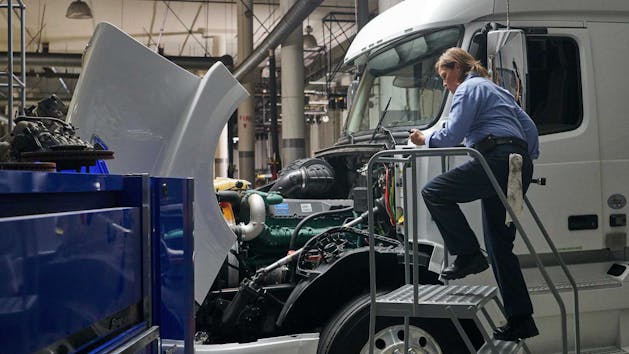Find the right solution for your business with our free Fleet Management Buyer’s Guide.
3 Ways to Make Your Trucks Targets for Inspection
Managing your CSA profile is an essential element of an effective and proactive safety program. Since the data that goes into your profile and individual BASIC scores come from your fleet’s roadside inspection performance, having a well-trained and educated driver force is equally essential.
The Federal Motor Carrier Safety Administration (FMCSA) and its authorized agents use three methods for targeting vehicles and drivers for inspection:
- Observable Defects
- Moving/Traffic Violation
- Inspection Selection System
1 - Observable Defects
Did you know that about 63 percent of roadside inspections are triggered by a commercial motor vehicle being driven with an observable defect, such as inoperable required lights, underinflated or flat tires, missing hazardous material placards, fluid leaks, etc.? These visual violations dare inspectors to pull your vehicle over and conduct an inspection.
[Tweet "Around 63% of roadside inspections are triggered by an observable defect. #CSA #DOT #trucksafety"]
2 - Moving Violations
Did you know that about 22 percent of roadside inspections are triggered by a suspected moving violation such as speeding, following too close, failure to obey a traffic control device, etc.? These are all controllable behaviors on the part of the driver. Law enforcement will pay special attention to drivers who violate traffic laws since this type of behavior puts the driver and motoring public at greater risk for an accident.
2014 Top Commercial Motor Vehicle Moving Violations:
- Speeding = 132,685
- Seat belt violation = 53,787
- Failure to obey = 13,640
- Following too close = 10,078
- Improper/unsafe passing = 2,439
- Radar detector = 2,140
- Failure to yield = 1,965
3 - Inspection Selection System (ISS)
Inspections without a probable cause of a moving violation or an observable defect are triggered by the Inspection Selection System (ISS). ISS is the primary tool supported by FMCSA for use on the roadside to screen commercial motor carrier vehicles for inspection. Approximately 15 percent of roadside inspections are triggered by ISS.
Bottom Line: Are your drivers trained or untrained?
The vast majority of roadside inspections are triggered by driver behavior in the form of poor or inadequate pre-trip inspections or violating a traffic law. Knowledge is power. Through quality and consistent training; educate your drivers in “target avoidance” techniques. Conduct proper and thorough vehicle inspections that eliminate observable defects before hitting the road. Drive defensively and obey all traffic laws. By doing so, you won’t be putting yourself at greater risk of accident or arrive at your destination any faster.
Learn more about improving fleet safety.
Find out how our platform gives you the visibility you need to get more done.




